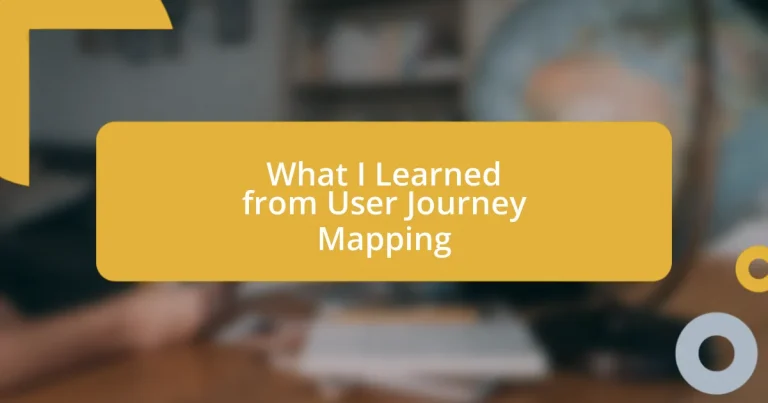Key takeaways:
- User journey mapping visually represents user experiences, revealing not just actions but also emotions, which helps in designing user-centric solutions.
- Collaboration across departments during mapping sessions enhances understanding of user needs and identifies critical pain points, leading to targeted improvements.
- Incorporating user feedback and emotional insights directly into the design process fosters empathy, shifting organizational culture towards compassion and shared responsibility.
- Effective user journey mapping can lead to increased customer retention and satisfaction by creating more intuitive and emotionally satisfying experiences.
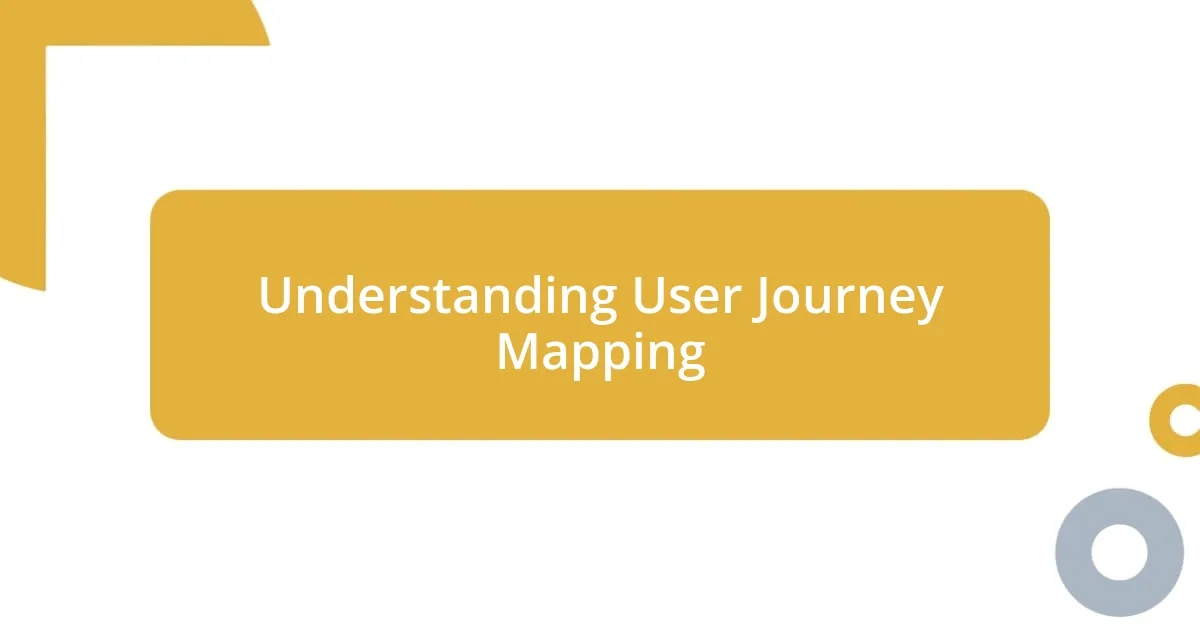
Understanding User Journey Mapping
User journey mapping is a powerful tool that allows us to visualize and understand the experiences our users go through when interacting with a product or service. I remember the first time I engaged in this process; it felt like unraveling a complex puzzle. Each piece represented a different phase, emotion, or touchpoint, and piecing them together revealed a clearer picture of user experiences.
Through mapping, we uncover not just what users do, but how they feel at critical moments. Have you ever made a purchase only to feel a wave of anxiety about your decision? That’s exactly the kind of insight journey mapping brings to light. By understanding these emotions, we can sculpt experiences that alleviate those worries, creating a more compelling journey for the user.
Moreover, user journey mapping encourages collaboration among different departments. I once facilitated a session where marketing, design, and support teams shared their unique insights on the customer experience. The discussions were enlightening, sparking ideas that improved the overall journey. Isn’t it incredible how different perspectives can converge to enhance our understanding of user needs?
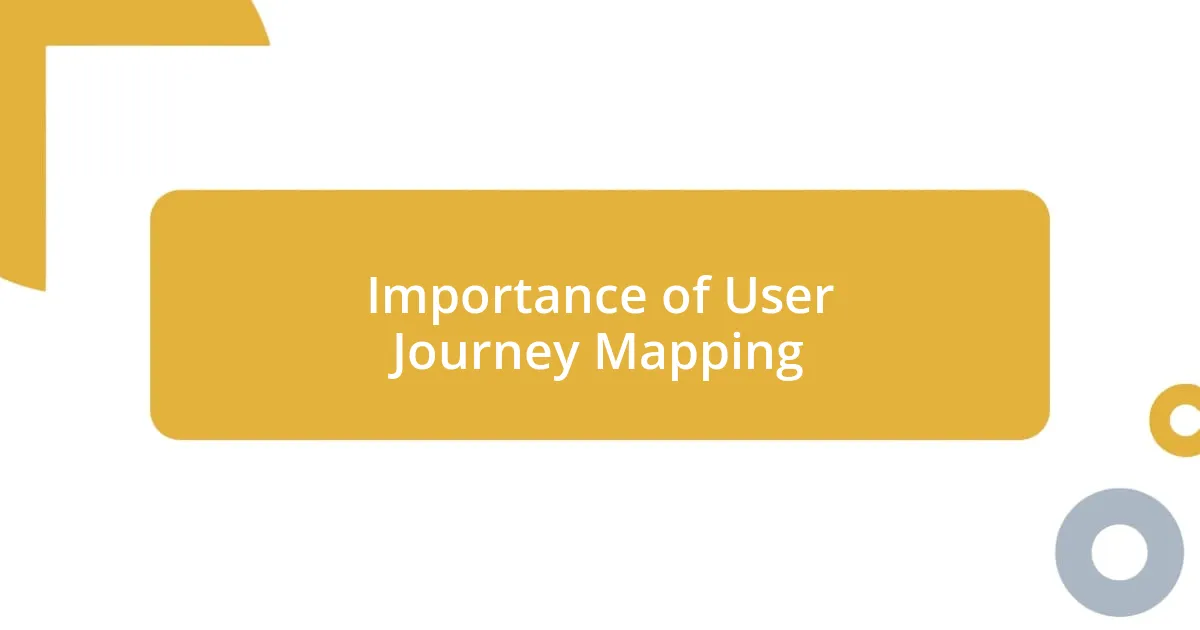
Importance of User Journey Mapping
User journey mapping is essential because it brings clarity to the often chaotic landscape of user experiences. I recall a project where we mapped out the journey of first-time users on our platform. This exercise revealed not only the steps users took but also the emotions they experienced along the way—like confusion and frustration— at points we hadn’t even considered. By identifying these emotional touchpoints, we were able to design targeted solutions that made the onboarding process smoother and more welcoming.
- Enhances empathy: Understanding user emotions allows for the design of user-centric solutions.
- Reveals pain points: Identifying frustration areas enables us to address them effectively.
- Facilitates cross-team collaboration: Different departments can align efforts to improve the user experience.
- Informs strategic decisions: Data-driven insights guide product enhancements and marketing strategies.
- Increases customer retention: A well-mapped journey fosters loyalty by enhancing the overall user experience.
Every time I reflect on our mapping sessions, I can’t help but be amazed at how a straightforward diagram can spark profound insights that lead to significant improvements. It’s a reminder that our users are not just data points; they are people who experience emotions, and understanding that is truly invaluable.
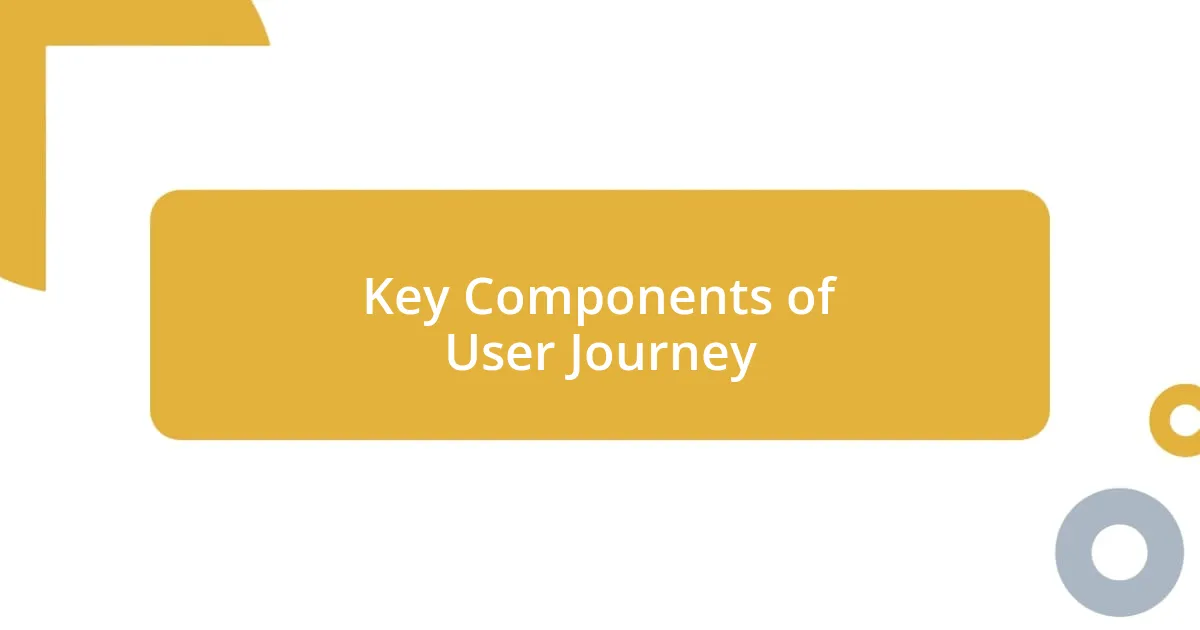
Key Components of User Journey
User journey mapping breaks down the user experience into distinct phases, allowing us to identify key components that shape interactions. Each phase typically includes touchpoints, which are critical moments where users interact with the product. I vividly recall a time we pinpointed these specific touchpoints during testing; suddenly, what seemed abstract became tangible, influencing our design discussions in a very productive way.
In addition to touchpoints, emotions play a vital role in shaping a user’s journey. I remember a project where we noted a spike in user frustration at a particular stage. It hit me that this was an emotional response, not merely an obstacle. By addressing this emotional aspect, our team crafted enhancements that turned frustration into delight, leading to simply better usability.
Another essential component is user feedback, which provides invaluable insights into their experiences. On one occasion, we hosted a feedback session where users shared their journeys directly. This experience was eye-opening; their stories humanized our data, revealing not just what they did, but how they felt during various touchpoints. Transforming these insights into actionable strategies is a game changer for any team.
| Component | Description |
|---|---|
| Touchpoints | Key interactions where users engage with the product. |
| Emotions | The feelings users experience during their journey. |
| User Feedback | Insights collected directly from users about their experiences. |
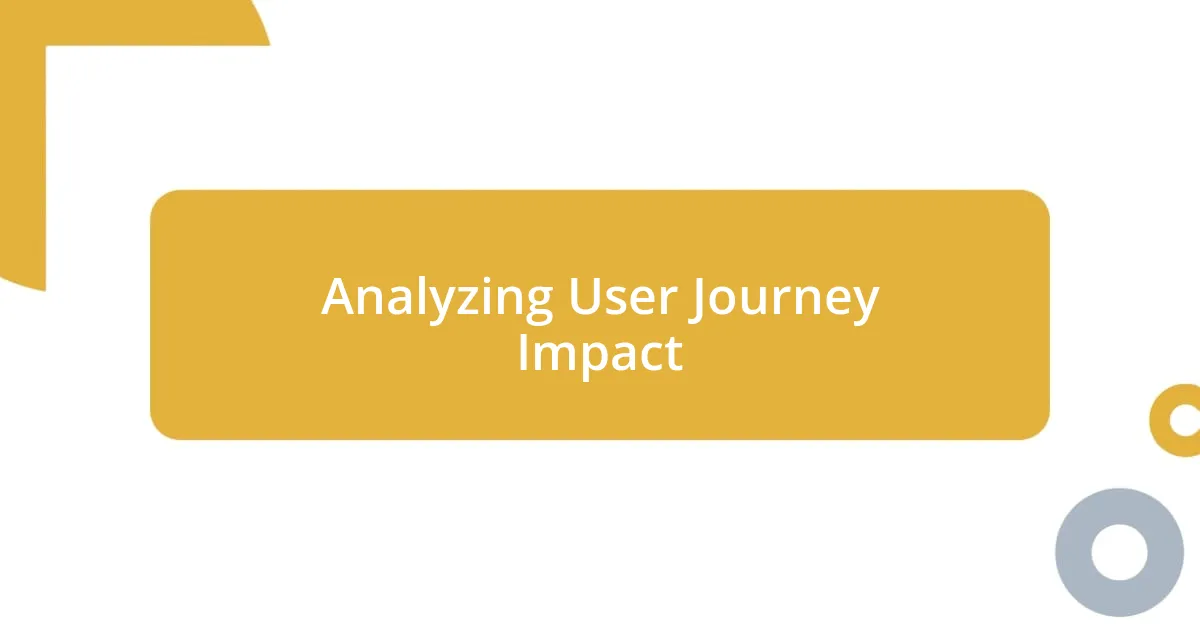
Analyzing User Journey Impact
When analyzing the impact of a user journey, I often find myself returning to those moments when users clearly articulated their frustrations. There was an instance where a user described their journey with such raw honesty during a focus group—it was a pivotal moment for us. This firsthand account not only highlighted a specific pain point but also served as a rallying cry for the team to innovate solutions that addressed these real emotional experiences.
I’ve learned that the impact of user journey mapping stretches far beyond identifying issues; it’s about fostering a culture of empathy within the organization. After one particularly revealing mapping session, I noticed how each team member became more attuned to user feedback. It felt like a light bulb moment—everyone began asking themselves, “How would I feel in their shoes?” Suddenly, tackling user pain points wasn’t just a task; it became a shared responsibility rooted in compassion.
In another project, we employed quantitative metrics alongside qualitative insights from our mapping activities. It was fascinating to see how user satisfaction scores improved dramatically after we implemented certain changes based on our findings. Reflecting on this, I often wonder—what could we achieve if every organization prioritized this empathetic approach to their design process? I believe that the narrative we craft around user experiences can hold the key to unlocking greater customer loyalty and satisfaction.
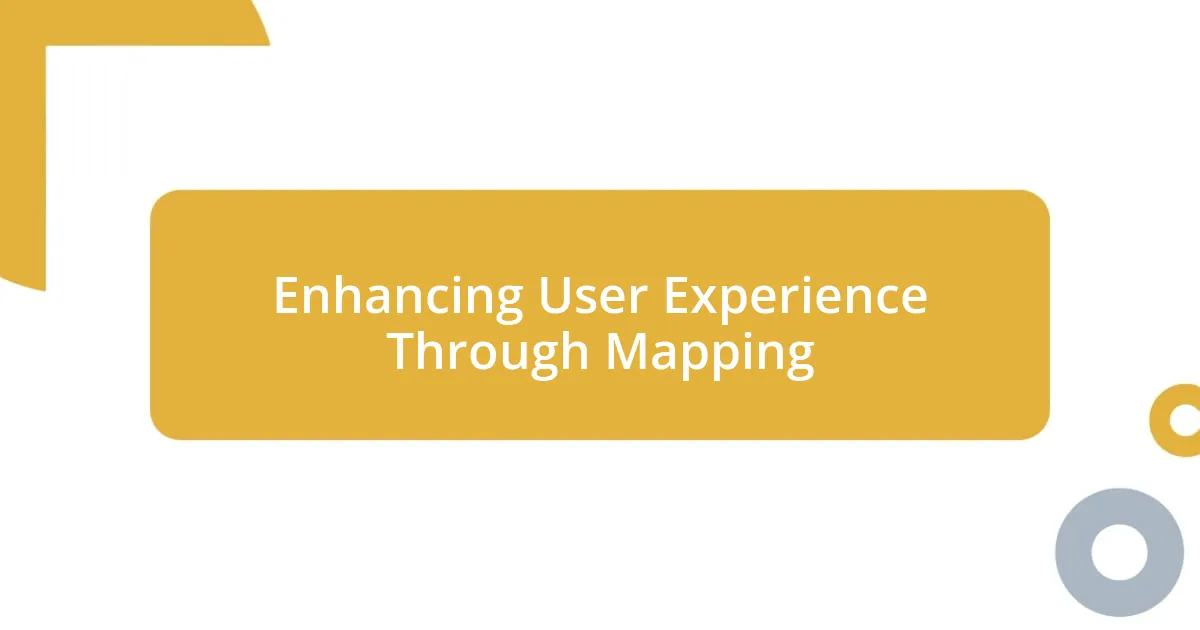
Enhancing User Experience Through Mapping
Mapping user journeys is more than just outlining steps; it’s about seeing the experience through a user’s eyes. I recall a project where we mapped out the entire onboarding process, and the revelations were startling. Users expressed a mix of excitement and confusion at various stages. Understanding their emotions helped my team enhance visual cues, transforming the onboarding process into a seamless experience.
One moment that truly struck me was during a post-mapping workshop when a designer shared her personal experience as a user of our product. She described how a seemingly insignificant step in the journey felt daunting to her. This sparked an enlightening conversation about potential changes that could make the journey more intuitive for everyone. I began to realize that discussions like these make user journey mapping not only a technical exercise but an emotional journey in itself.
Furthermore, there’s a trickle-down effect when we prioritize user experience through mapping. I noticed a clear shift in how my colleagues approached their work after sharing stories of user encounters. It’s as if a common thread connected us—we were all driven to create products that resonate on a human level. Isn’t it fascinating how understanding users can enhance not just their experience, but also the culture within our teams? This connection is vital in crafting solutions that feel not just functional, but also deeply satisfying to the end-user.












